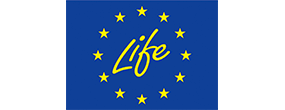Overview
In 2022, final energy consumption (FEC) in Ireland (excluding international bunkers, climatic corrections applied), was 11 Mtoe , 10% higher than in 2000. In 2022, the transport sector had the highest energy demand (4.0 Mtoe), followed by residential (2.8 Mtoe); and industry (2.1 Mtoe). Over 2000-2022, FEC in transport increased by 14% but its share in total FEC increased from 35% to 36% during this period. During the same period, FEC in residential increased by 6.1%, its share in total FEC decreased from 26% to 25% and FEC in industry decreased by 13% and its share in total FEC dropped from 24% to 19%.
Figure 1: Final energy consumption by sector (with climatic corrections)
Source: ODYSSEEEnergy efficiency for final consumers, measured by ODEX, improved by 35% between 2000-2022; an average improvement of 1.9% per year. Energy efficiency in industry and residential improved by 49% and 43%, respectively over this period. Industry energy intensity reduced dramatically, beginning in the early 2000's, with a move away from energy intensive industries to low energy intensity, high value-added sectors. Residential energy intensity reduced significantly after 2006, due to a combination of improvements to building efficiency, then record high oil prices and reduced disposable income. The energy intensity of private cars improved after 2008. Services energy intensity improved but there is limited data available to understand the underlying drivers in this sector.
Figure 2: Technical Energy Efficiency Index
Source: ODYSSEEIreland's National Energy and Climate Plan (NECP) 2021-2030 was first published in 2020, and a draft update submitted to the European Commission in July 2024. This sets out Ireland's ambition for energy efficiency savings in the period 2021-2030. As well as the NECP, Ireland’s Climate Action Plan (2024), the 4th National Energy Efficiency Action Plan (2017), National Mitigation Plan (2017), Long Term Renovation Strategy (2017) and National Development Plan (2018) set out the policies, measures and programmes that Ireland is already undertaking, developing and considering to achieve energy efficiency and climate objectives.
Some of the general policies shown in the table below. These include regulatory, incentives, grant schemes and infrastructure improvements.
Table 1: Sample of cross-cutting measures
| Measures | NECP measures | Description | Expected savings, impact evaluation | More information available |
|---|---|---|---|---|
| Energy Efficiency Obligation Scheme (EEOS) | Yes | The scheme is designed to promote energy efficiency in homes, businesses and communities in Ireland. Under EEOS, the largest energy suppliers and distributors in Ireland are required to achieve annual energy efficiency targets. Large energy suppliers and distributors include companies that sell more than 400GWh of energy per year to final customers. These companies, known as Obligated Parties (OPs), are given specific annual targets based on their market share within the energy industry. | High | Link |
| Carbon Tax | Yes | Tax on solid and liquid fossil fuels based on the amount of carbon dioxide produced during combustion of the fuel (€/tonneCO2) | High | Link |
| Energy Efficiency in Electricity Transmission and Distribution | Yes | Measures to improve efficiency include placing targets for reduced losses on the Transmission Service Operator | Low | Link |
| Better Energy Communities Programme (Community Energy Grants) | Yes | The grant scheme supports community-based energy efficiency projects through capital funding, partnerships, and technical support. Projects must have a community focus with a diverse group of beneficiaries. | Low | Link |
Buildings
With climatic corrections applied, in households, the space heating energy consumption was 7.4 koe/m2, an improvement of 45% between 2000-2022. This was due to a combination of factors including improved building regulations for new dwellings and retrofitting of existing dwellings. Economic factors including the post 2009 recession and high oil prices from 2012 also lead to decreased spending on fuel. After the last recession in 2014, incomes increased and oil prices fell and space heating remained relatively stable between 2015-2022.
Figure 3: Energy consumption of household space heating per m2 (with climatic corrections)
Source: ODYSSEEFigure 4: Energy consumption per dwelling by end-use (except space heating)
Source: ODYSSEEFinal energy consumption in the residential sector in 2022 was 2.7 Mtoe, 2% higher than in 2000. This was a result of a number of competing factors. There were 54% more permanently occupied dwellings in 2022 vs. 2000 to which +1.4 Mtoe of energy were attributed to, as well as larger homes which also contributed to increasing energy consumption in households (+0.6 Mtoe). This was countered by climatic factors (-0.1 Mtoe), other factors (-0.4 Mtoe) and energy savings (-1.8 Mtoe) when comparing 2022 to 2000. Energy savings were the largest driver for a decrease in the energy consumption.
Figure 5: Main drivers of the energy consumption variation in households
Source: ODYSSEETotal services energy consumption per employee decreased by 2% in 2022 vs. 2000. Electricity use in services is driven by the sector's changing structure and the general increase in use of ICT and electric heating. Note that data centres are included in services. The CSO reported that 18% of metered electricity was consumed by data centres in Ireland in 2022.
Figure 6: Energy and electricity consumption per employee in services (with climatic corrections)
Source: ODYSSEEEnergy efficiency measures in households have largely focused on improving the thermal efficiency of dwellings, through improved regulations on new buildings and a programme of retrofitting for the existing housing stock.
The National Retrofit Plan (2021) sets out Irelands approach to achieving Climate Action Plan targets of upgrading homes to improve energy efficiency. The plan outlines measures including; One Stop Shop for deep retrofit support, Better Energy Homes for shallow retrofit support, and Warmer Homes for lower income households.
Since 2020, all new dwellings are required to meet the Nearly Zero Energy Building Standard which aligns with Directive 2010/31/EU. The standard also applies to existing dwellings undergoing major renovations.
Table 2: Sample of policies and measures implemented in the building sector
| Measures | NECP measures | Description | Expected savings, impact evaluation | More information available |
|---|---|---|---|---|
| Better Energy Homes (Residential Retrofit) | Yes | This programme, implemented by the Sustainable Energy Authority of Ireland, provides capital grants to householders for the implementation of energy efficiency measures including attic and wall insulation and heating controls with efficient boilers | High | Link |
| Nearly Zero Energy Homes (Directive 2010/31/EU) | No | This measure tightens the regulations and minimum standards for several building aspects regarding e.g. insulation levels, heating systems or pipes. The NZEB standard will apply to all new buildings occupied after the 31st December 2020. For all new builds, NZEB is equivalent to a 25% improvement in energy performance on the 2011 Building Regulations. | High | Link |
| Warmer Homes Scheme (Low Income Housing Retrofit Strategy) | Yes | The scheme provides free home renovations for lower income households. The lowest performing homes are prioritised. The scheme also aims to reduce energy poverty. | Medium | Link |
| One Stop Shop (Residential Retrofit) | Yes | One stop shops centralise grant offerings and applications and retrofit services for households to simplify the process of undertaking a home retrofit. This programme commenced in 2022 with the aim of incentivising deep retrofits in the household sector. | Low | Link |
Transport
Transport energy consumption was 14% higher in 2022 when compared to 2000. Road transport remains dominant, holding a 95% of the share of transport energy consumption in 2022, an equal share to that in 2000.
Figure 7: Transport energy consumption by mode
Source: ODYSSEEPassenger traffic increased by 93% over 2000-2022 with passenger traffic by cars increasing from 34.6 to 68.3 Gpkm, or 97% over the period. Passenger traffic in buses has also increased by 80% over the period, but its share has fallen from 16% in 2000 to 15% in 2022.
Figure 8: Modal split of inland passenger traffic
Source: ODYSSEEFreight traffic also remained dominated by road freight and held a 99% share of total freight traffic in 2022. Road freight has remained stable in 2022 vs. 2000. From an already low base in the year 2000 the volume of rail freight decreased by 84% between 2000 and 2022, decreasing its share of total freight traffic from 4% to 1%.
Figure 9: Modal split of inland freight traffic
Source: ODYSSEETransport energy consumption was 14% higher in 2022 than in 2000, increasing from 3.5-4.0 Mtoe. This is a result of a number of competing factors. There was an increase in activity (1.5 Mtoe) as well as a modal shift which contributed to increasing energy consumption in transport. This was countered, in part, by energy savings (-1.0 Mtoe) and other factors. Energy savings were the largest driver for a decrease in energy consumption, but these savings did not outstrip increased activity.
Figure 10: Main drivers of the energy consumption variation in transport
Source: ODYSSEEIn Ireland, a number of fiscal and regulatory initiatives have been taken to promote the uptake of electric vehicles. Fiscal measures include tax incentives for BEVs & PHEVS including reduced Vehicle Registration Tax and reduced Annual Motor Tax. There are three distinct grant schemes for electric vehicles in 2024. The schemes provide electric vehicle finance for households, commercial vehicles and taxi drivers. To further support the roll out of electric vehicles €100mn was invested in charging infrastructure schemes in 2024. As part of the regulatory framework, Ireland mandates emission performance standards for new passenger cars and new light commercial vehicles in line with CO2 Standards for Passenger Cars and Light Duty Vehicles (EU) 2023/851.
Table 3: Sample of policies and measures implemented in the transport sector
| Measures | NECP measures | Description | Expected savings, impact evaluation | More information available |
|---|---|---|---|---|
| Emissions Based Vehicle Registration Tax & Other Tax Incentives for EVs | No | Tax incentives for BEVs & PHEVS were introduced. The measure was a fundamental shift in Vehicle Registration Tax and Annual Motor Tax. | High | Link |
| Electric Vehicle Grants | No | There are 3 distinct grant schemes electric vehicles. The schemes provide support for households, commercial vehicles and taxi drivers. | High | Link |
| EU-related: CO2 Standards for Passenger Cars and Light Duty Vehicles (EU) 2023/851 | No | CO2 emission performance standards for new passenger cars and new light commercial vehicles in line with the European Union’s increased climate ambition | High | Link |
Industry
Industry final energy consumption was 13% lower in 2022 than in 2000. Ireland's economic structure has changed considerably since 2000. All industrial branches decreased in energy consumption, with the exception of non-metallic minerals, which increased by 15%. The steel industry has not contributed to industry final energy consumption since 2006.
Figure 11: Final energy consumption of industry by branch
Source: ODYSSEEIndustry total energy consumption decreased from 2.5-2.1 Mtoe in 2022 vs. 2000. A number of competing factors contributed to this, such as increased activity (+3.0 Mtoe) and other factors (+0.1 Mtoe). This was countered, by a change in structure (-1.8 Mtoe) and energy savings (-1.6 Mtoe). Care must be taken when examining Ireland's industry energy intensity, as illustrated in 2015 when manufacturing value added grew by more than 85%, resulting from the transfer of intellectual property into Ireland with little corresponding energy use.
Figure 12: Main drivers of the energy consumption variation in industry
Source: ODYSSEEThe Large Industry Energy Network is a voluntary grouping of companies that work together to develop and maintain robust energy management. Regular networking events, workshops, seminars and site visits provide opportunities for members to learn from energy experts and peers.
The Accelerated Capital Allowance is a tax incentive which encourages companies to invest in energy saving technologies. The ACA allows companies to write off the purchase value of qualifying energy efficient equipment against their profit in the year of purchase.
Table 4: Sample of policies and measures implemented in the industry sector
| Measures | NECP measures | Description | Expected savings, impact evaluation | More information available |
|---|---|---|---|---|
| Large Industry Energy Network (LIEN) | No | A network of large organisations who work together to improve their energy performance and share experiences amongst members. The members of the network are comprised of organisations that account for approximately 20% of Ireland’s energy requirement. | High | Link |
| Tax Relief for Energy Saving Equipment - Accelerated Capital Allowance | No | The Accelerated Capital Allowance (ACA) is a tax incentive which encourages businesses to upgrade to the most energy efficiency equipment. | Medium | Link |
| Voluntary Energy Agreements for Large Industry | No | The scheme supports companies in the Large Industry Energy Network who are seeking to go beyond business as usual to adopt a strategic and structured approach to energy management to reduce their energy costs and CO2 emissions. Companies participating commit to implementing and maintaining an energy management system to the International Energy Management Standard, ISO 50001. | Medium | Link |



